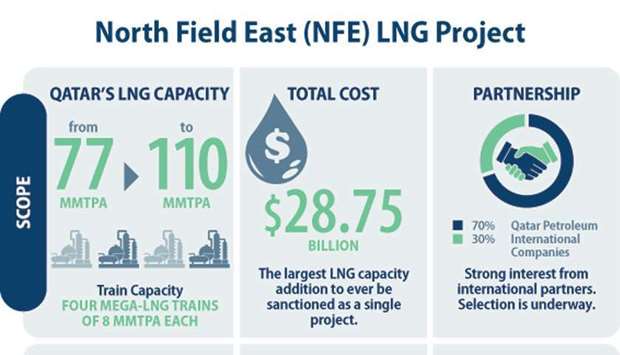A significant portion of the $28.75bn North Field East Project's (NFE) electrical power needs will be provided from Qatar’s national power grid, and Qatar Petroleum is in the process of procuring such power from the 800 megawatt solar power plant currently under construction in Al-Kharsaah.
This, according to HE the Minister of State for Energy Affairs Saad bin Sherida al-Kaabi, is in addition to a further 800 megawatts of solar power from a plant, which Qatar Petroleum will construct in the near future as part of its plans to have a solar power portfolio of more than 4,000 megawatts by 2030.
Highlighting the significance of this event in the context of the global LNG and energy industry, the minister said, “This event is of particular importance as it comes at a critical time when the world is still reeling from the effects of a global pandemic and related depressed economies. This investment decision is a clear demonstration of the steadfast commitment by the State of Qatar to supply the world with the clean energy it needs.”
“Today’s decision carries even more significance considering that it encompasses a number of concrete environmental investments in support of our strong commitment to achieve the highest environmental standards and to provide a credible solution in the low-carbon energy transition.


“One of the most important environmental elements of the NFE project is its CO2 capture and sequestration (CCS) system that will be integrated with our wider CCS scheme in Ras Laffan, which, once fully operational, will be the largest of its kind in terms of capacity in the LNG industry, and will be one of the largest ever developed anywhere in the world,” al-Kaabi noted.
In addition to the CCS scheme, the NFE project will have a number of elements that provide this project with a unique positive environmental proposition, such as a ‘jetty boil-off gas’ recovery system, which will help reduce greenhouse gas emissions (GHG) by approximately 1mmtpy of CO2 equivalent.
The project will also conserve 10.7mn cubic metres of water per year by recovering 75% of the plant’s tertiary water and NOx emissions will be reduced by 40% through the application of enhanced ‘Dry Low NOx’ technology.


